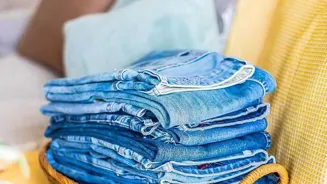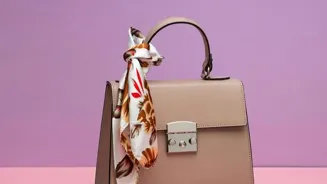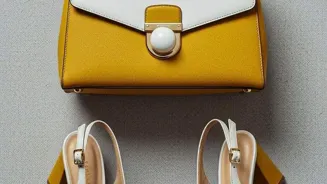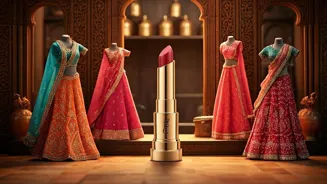Discover 10 Iconic Fashion Moments that Shaped History. From Chanel's liberation to sustainable fashion revolution. Read on!
Fashion, yaar, is more than just clothes we wear. It's a reflection of our times,
our dreams, and our aspirations. Throughout history, certain moments have stood out, leaving an indelible mark on the industry and shaping the way we dress even today.
These moments weren't just about pretty outfits; they were statements, rebellions, and game-changers that redefined style and challenged norms. Let’s take a look at ten such iconic moments that forever changed the fashion landscape:
Coco Chanel Liberates Women from Corsets (1920s)
Before Coco Chanel, women's fashion revolved around restrictive corsets and elaborate dresses. Chanel questioned this, introducing comfortable knitwear, simple silhouettes, and the iconic "little black dress." This was a revolutionary era, where women's liberation went hand in hand with clothes.
Women began feeling empowered with the comfortable and fashionable clothes. This shifted the focus to comfort and practicality, allowing women to move freely and express themselves without physical constraints.
Forget all the old fashion trends and embrace the freedom of movement with Chanel's revolutionary designs this helped change the world of fashion..
Dior's "New Look" Reshapes Post-War Fashion (1947)
After the austerity of World War II, Christian Dior unveiled his "New Look," characterized by full skirts, cinched waists, and soft shoulders. This was a stark contrast to the boxy, utilitarian styles of the war years. This was a breath of fresh air.
The "New Look" was not just about clothes; it was about hope, glamour, and a return to femininity. Dior reintroduced the idea of luxurious fabrics and intricate designs.
This trend dominated the fashion scene for the next decade, setting the stage for the glamorous era of the 1950s, and becoming one of the biggest revolutionary changes in history. It was a visual representation of optimism and a celebration of womanhood.
Mary Quant Introduces the Miniskirt (1960s)
The 1960s were a time of youth rebellion and cultural change, and Mary Quant's miniskirt was the perfect embodiment of this spirit. Hemlines soared, and legs were finally on display, making the miniskirt a symbol of youthful exuberance and sexual liberation.
This style challenged the conservative norms of the previous generation. It quickly became a global phenomenon. It empowered women to express their style on their own terms, thereby setting a new standard for fashion.
This was a bold statement about freedom and independence, forever changing the way women dressed and perceived themselves.
Yves Saint Laurent's Le Smoking (1966)
Imagine a world where trousers were exclusively for men! Yves Saint Laurent shattered this barrier. He introduced "Le Smoking," a tuxedo suit designed for women. This wasn't just about androgyny; it was about power and sophistication.
Le Smoking challenged traditional gender roles, helping women make bold sartorial choices, and offering an alternative to the frilly dresses that society expected. It was a symbol of female empowerment, allowing women to command attention and exude confidence in a classically masculine silhouette.
Saint Laurent's design remains a timeless classic, showcasing the enduring appeal of blurring gender lines in fashion.
Punk Rock's Anti-Establishment Style (1970s)
The punk rock movement was all about rebellion, and its fashion reflected that. Torn clothes, safety pins, ripped stockings, and DIY aesthetics became the fashion code of many. This was a deliberate rejection of mainstream fashion.
Punk was about self-expression and individuality, giving the youth generation a way to stand in resistance.. It encouraged people to create their own style, question the status quo, and not be afraid to stand out.
While Punk may not be glamorous, it undeniably left a lasting impact on fashion, influencing designers and inspiring generations to embrace their individuality.
Madonna's Cone Bra (1990)
Jean Paul Gaultier's iconic cone bra for Madonna's "Blonde Ambition" tour was a truly daring move. This outfit challenged conventional notions of femininity and pushed boundaries towards clothing options.
Madonna used fashion as a tool, and the cone bra became so popular that people started experimenting with androgynous and bold statement pieces. It sparked discussions about sexuality, performance, and the power of image.
The cone bra remains a powerful symbol of female empowerment and artistic expression in the fashion industry.
Grunge Disrupts the Runway (1990s)
The early 1990s saw the rise of grunge, a subculture characterized by its laid-back style. Designers like Marc Jacobs sent models down the runway in ripped jeans, oversized flannels, and combat boots. This was a huge shift from the glamorous styles of the 1980s.
Grunge represented authenticity and a rejection of consumerism and glamour. In the realm of high fashion, this helped normalize the street style. It was a signal that fashion could be comfortable, accessible, and expressive, influencing a generation to embrace individuality.
Alexander McQueen's Avant-Garde Shows
Alexander McQueen was known for his dramatic, theatrical, and sometimes controversial fashion shows. His designs often pushed the boundaries of art and technology, showcasing innovative silhouettes, unexpected materials, and thought-provoking themes. McQueen's shows were never just about clothes.
Rather, they were about storytelling, challenging perceptions, and evoking powerful emotions. He used fashion to explore themes of life, death, beauty, and decay, leaving an indelible mark on the industry for pushing creativity.
The Rise of Fast Fashion (2000s)
The early 2000s witnessed the explosion of fast fashion chains like Zara and H&M. These retailers offered trendy clothes at affordable prices, making fashion more accessible to the masses. This changed the way people consumed fashion, leading to a cycle of constant trends and increased consumption.
While fast fashion made style attainable, it also raised concerns about ethical production practices and environmental sustainability, issues that the industry continues to grapple with today.
Sustainable Fashion Takes Center Stage (2010s - Present)
With growing awareness of the environmental and social impact of the fashion industry, sustainable fashion has emerged as a major force. Designers and brands are focusing on ethical production, sustainable materials, and circularity, exploring innovative ways to reduce waste.

Consumers are also becoming more conscious of their choices. They began supporting brands that prioritize transparency and sustainability.
This shift reflects a growing understanding that fashion can be both stylish and responsible, shaping a more ethical and environmentally conscious future for the industry.
AI Generated Content. Glance/InMobi shall have no liability for the content







